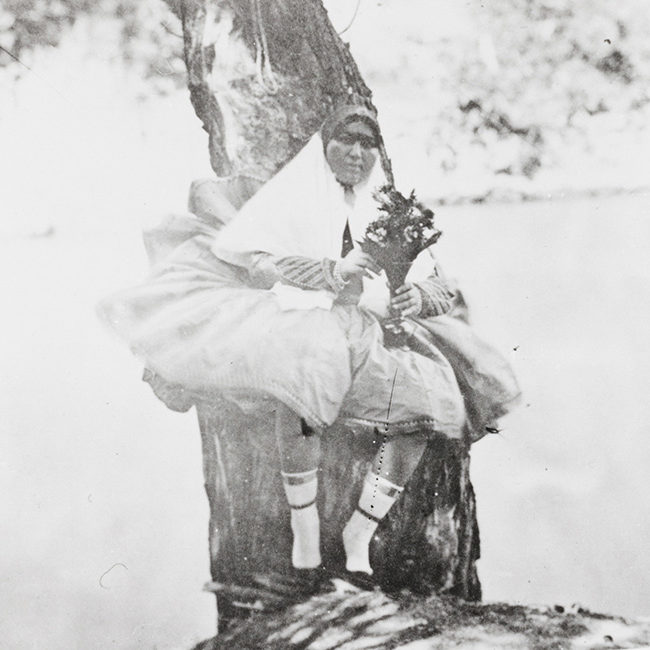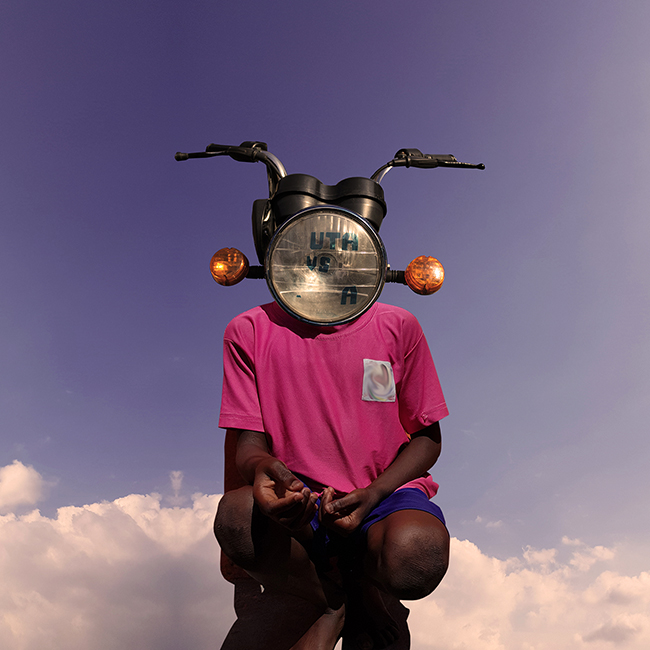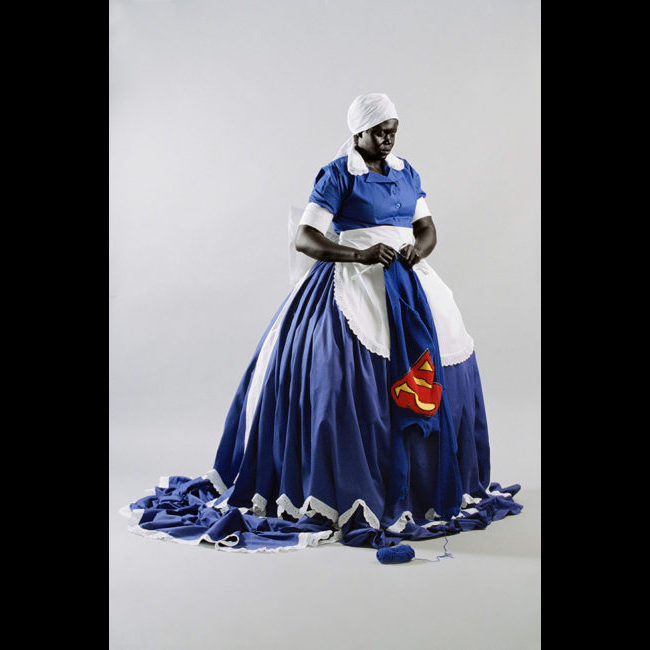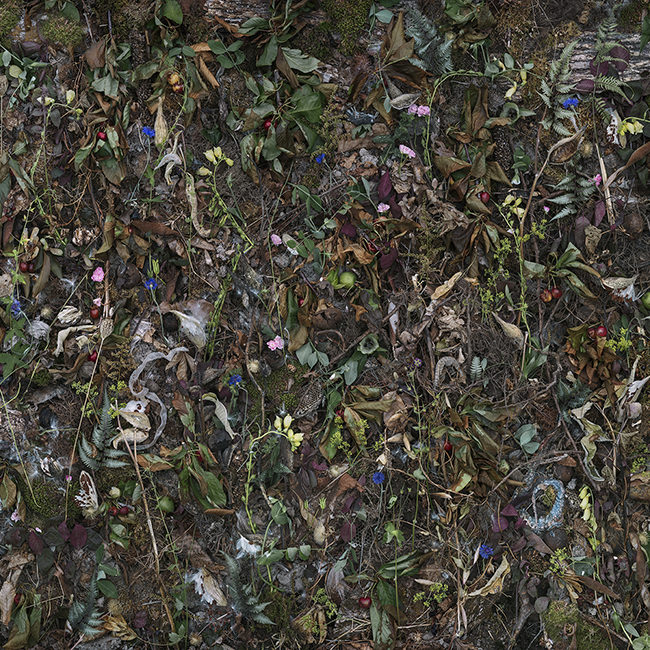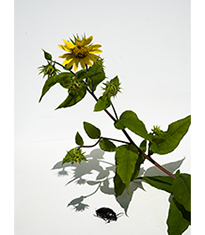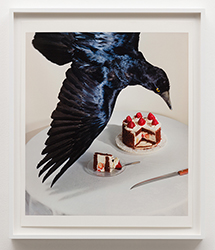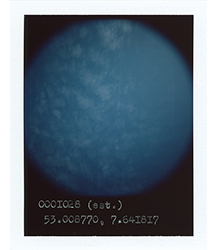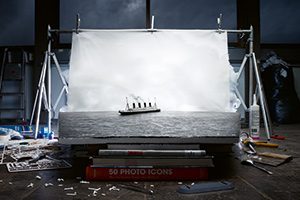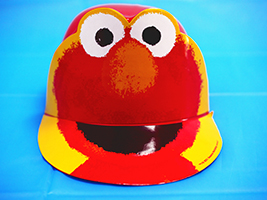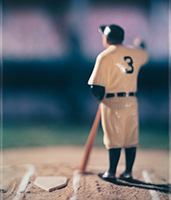The photographs in Charles Lindsay’s newest monograph, Recipes for the Mind (Terra Nova Press, 2019), are anything but still. They’re strange. They’re distorted and bent with rainbow-like chromatic aberrations. They’re trippy, to be exact. In each image a pair of hands (presumably Lindsay’s) holds a photograph that Lindsay made during his eclectic career and life. Some of the photographs show people and animals from Lindsay’s travels to obscure reaches of the Earth, while others are more mundane. In one a peeled banana is propped against a window, in another eggs and tomatoes fry in a pan.
There are 108 photographs in Recipes for the Mind and each is coupled with a feverish text––or “recipe” if you will––written in response to the photograph. Nearly all the titles of the texts reference food in some way: “Pie in the Sky”; “Cannibal Cuisine”; “Tuna Fish Trees”; “Grandma’s Tongue”. In the texts themselves, Lindsay reflects on art, technology, consumption, near-death experiences, encounters with the wild, psychedelics, time travel, failure and courage. If there is a narrative arc, it’s Lindsay’s life. The book, writes John P. O’Grady in the foreword, is a “condensed autobiography, decades of inspiration and pursuit refined into 108 provocative texts bleeding into exquisite photographs that are themselves bleeding into something else.”
The “something else” in the work often remains ambiguous, combining elements from the past and present, but isn’t that true of most memories? Also, lucidity does not seem so much the aim of work as a craving to reflect.
A red-hued image titled “First Food Memory” pictures an astronaut. The text envelops the spaceman in earthly comforts and familiar emotions.
first food memory
TV dinner
aluminum pan
fried chicken mashed potatoes
an Eggleston photo
but not that
the first memory
that I remember
Mom crying
JFK dead
on TV
I was 2
nothing to fear
but fear itself
In the press release, Terra Nova explains the work by saying, “The photographs and poems reveal a hunger and life on the move, careening from nature to machine with food serving as a tasty metaphor.” The original photographs date back to 1984 and cover ground as varied as the Canadian Arctic, Asia, Europe, South America, the U.S. and beyond. Manipulated in 2019, the images are imbued with a sense of having traveled across time and space and are now coming into focus through a hallucinatory haze. Looking at them is similar to what it felt like to turn on an old tube TV. There’s anticipation, curiosity, trepidation––until the picture comes into focus.
The work is slippery in the best way. O’Grady manages to eloquently boil down the concoction that is Recipes for the Mind. He writes, “In Charles Lindsay’s marvelous kitchen, language and image are rendered more piquant…. Recipes for the Mind is not a work intended to satisfy the hunger, but rather one designed to stimulate the appetite.”
Charles Lindsay, a 2010 Guggenheim recipient, was educated as an exploration geologist. The first artist-in-residence at the SETI Institute (Search for Extra Terrestrial Intelligence) in Silicon Valley, he now directs the SETI AIR residency program: pairing artists with leading astro-scientists. His photography work has appeared in Wired, Motherboard, the New York Times Magazine, on CNN and NPR, and in leading magazines in Japan, China and Europe. Recipes of the Mind is his eighth photo book.
—Sarah Stacke
Recipes for the Mind
By Charles Lindsay
Terra Nova Press
Related Articles
For Jonathan Blaustein There’s No Party at Party City
An Encyclopedic Look at the History of Food Photography
Mining ‘Color’s Mother Lode’
